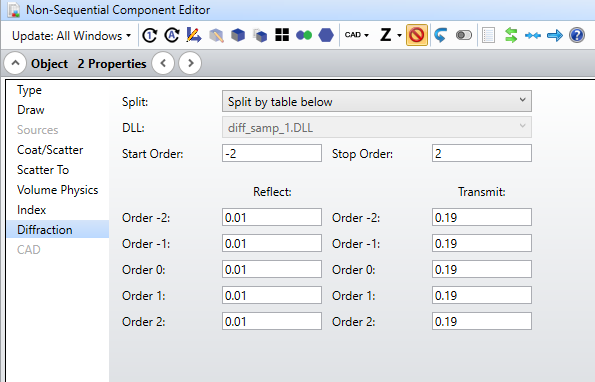Hi, I was reading Michael Cheng's excellent article Simulating diffraction efficiency of surface-relief grating using the RCWA method and have a question.
In the FAQ section there is a part about comparing to the built-in diffraction model. Michael says: The main difference is that RCWA code will define the diffracted ray’s electric field while the built-in model cannot. I don't follow this last part.
Any ray must have a defined electric field because k.E==0 and you can easily check that diffracted rays do in fact have defined electric fields. Could someone (Michael?) clarify this part please?
- Mark






